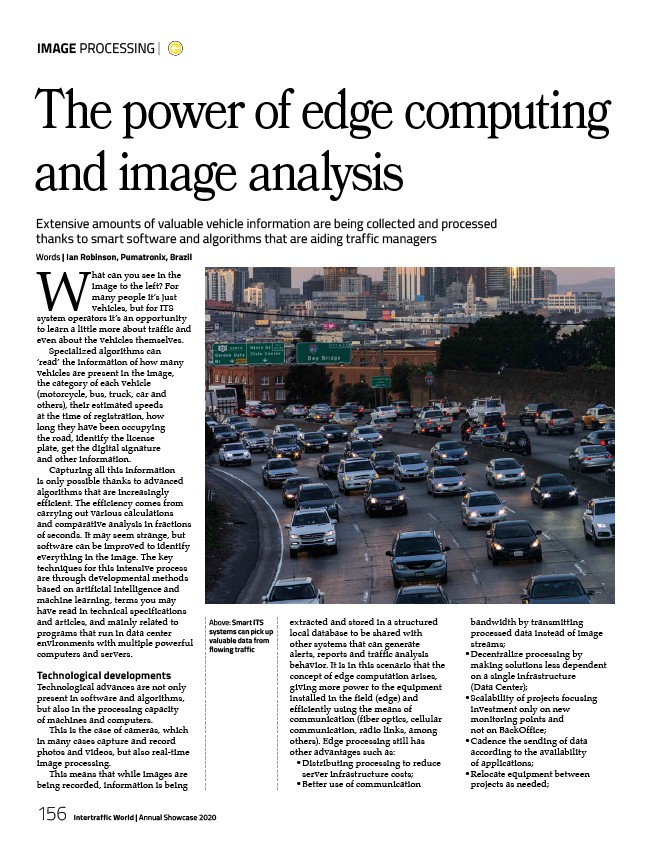
IMAGE PROCESSING |
The power of edge computing
and image analysis
Extensive amounts of valuable vehicle information are being collected and processed
thanks to smart software and algorithms that are aiding traffic managers
Words | Ian Robinson, Pumatronix, Brazil
Above: Smart ITS
systems can pick up
valuable data from
flowing traffic
What can you see in the
image to the left? For
many people it’s just
vehicles, but for ITS
system operators it’s an opportunity
to learn a little more about traffic and
even about the vehicles themselves.
Specialized algorithms can
‘read’ the information of how many
vehicles are present in the image,
the category of each vehicle
(motorcycle, bus, truck, car and
others), their estimated speeds
at the time of registration, how
long they have been occupying
the road, identify the license
plate, get the digital signature
and other information.
Capturing all this information
is only possible thanks to advanced
algorithms that are increasingly
efficient. The efficiency comes from
carrying out various calculations
and comparative analysis in fractions
of seconds. It may seem strange, but
software can be improved to identify
everything in the image. The key
techniques for this intensive process
are through developmental methods
based on artificial intelligence and
machine learning, terms you may
have read in technical specifications
and articles, and mainly related to
programs that run in data center
environments with multiple powerful
computers and servers.
Technological developments
Technological advances are not only
present in software and algorithms,
but also in the processing capacity
of machines and computers.
This is the case of cameras, which
in many cases capture and record
photos and videos, but also real-time
image processing.
This means that while images are
being recorded, information is being
156 Intertraffic World | Annual Showcase 2020
extracted and stored in a structured
local database to be shared with
other systems that can generate
alerts, reports and traffic analysis
behavior. It is in this scenario that the
concept of edge computation arises,
giving more power to the equipment
installed in the field (edge) and
efficiently using the means of
communication (fiber optics, cellular
communication, radio links, among
others). Edge processing still has
other advantages such as:
• Distributing processing to reduce
server infrastructure costs;
• Better use of communication
bandwidth by transmitting
processed data instead of image
streams;
• Decentralize processing by
making solutions less dependent
on a single infrastructure
(Data Center);
• Scalability of projects focusing
investment only on new
monitoring points and
not on BackOffice;
• Cadence the sending of data
according to the availability
of applications;
• Relocate equipment between
projects as needed;